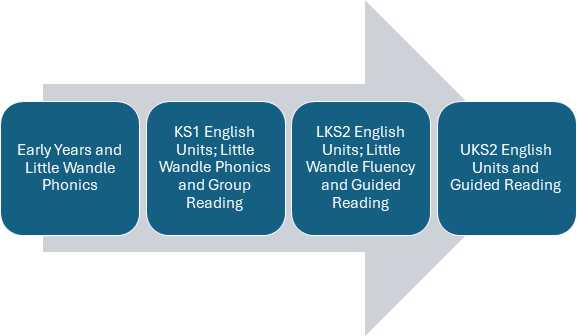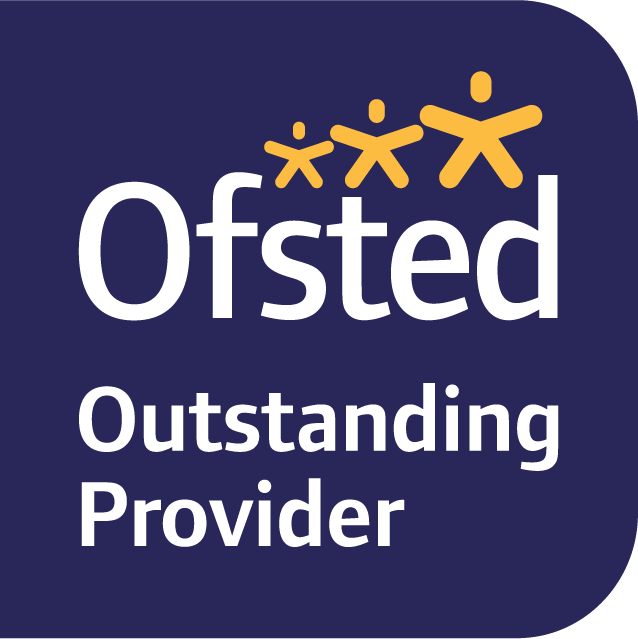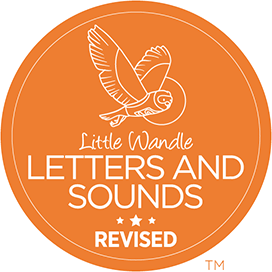Reading
At Holybrook Primary School, we are committed to teaching our pupils to become skilled readers, who develop a comprehensive understanding of words, language and texts as they move through school. They learn to read and the read to learn. Through a range of strategies detailed in this document, our aim is to ensure pupils develop a love of reading so they can read for purpose and pleasure. We aim go beyond the National Curriculum – utilising Education Endowment Foundayion evidence; The Department for Education Reading Framework alongside guidance from other partners – to transform our pupils’ relationship with literature through a diverse range of texts, authors and a systematic approach, underpinned by our curriculum drivers: possibilities; our place in the world, fresh experiences and equality and diversity.

Early Reading and Phonics
Pupils in Reception and Year 1 have daily phonics lessons to learn how to make connections between the sounds of our spoken words and the letters that are used to write them down. We have chosen Little Wandle phonics as our systematic synthetic phonics programme. Part of this programme is group reading, where pupils have reading practice, focusing on decoding, prosody and comprehension.
In Year 2, pupils move on to the Little Wandle Fluency programme. This is the start of the shift in focus at school towards reading for meaning and becoming truly fluent readers.
Reading in English Units of Work
Our English curriculum has been designed by our teachers to kindle pupils’ interest and expose them to a wide range of authors and literature. In Early Years, core texts are used as a starting point for discussion to help our pupils learn language comprehension and word reading.
In Key Stage 1 and Key Stage 2, all our English units of work are based on a key text. We have sequenced these to be progressively more challenging – taking into account the themes and context of the texts. We launch English units with a ‘hook’ to engage pupils in the text, which is part of our Reading for Pleasure strategy. Some examples of hooks our teachers have planned are:
-
School trips and in-school experiences
-
Using a thought-provoking quote from the book to spark a debate
-
Enter the setting using our VR headsets
-
Use of small-world resources
When studying a text, our pupils focus on ‘Reading as a Reader’ initially. This means they focus on understanding what they have read – through a focus on prediction, clarification of vocabulary, questioning and summarising – in-line with age-related skills. When the time is right, they switch focus to ‘Reading as a Writer.’ Now, our pupils focus on the features and tricks the author has used. Examples of ‘Reading as a Writer’ include:
-
Identifying rhyming patterns in poetry
-
Analysing authors’ use of figurative language
-
Collecting examples of persuasive language
This enables pupils to use their understanding of the text to move to the writing phase of units and create their own compositions.
One to One Reading
We place great importance on one-to-one reading as a key part of every child’s learning journey. Every pupil is listened to reading at least once a week - with their phonics fluency book or a class reader. For children who are at risk of falling behind age-related expectations, we provide more frequent one-to-one reading sessions to help them catch up and build confidence. This focused support ensures that every child has the opportunity to develop strong reading skills and a love of books.
Reading for Pleasure
We are passionate about nurturing a lifelong love of reading in every child. Our approach is inspired by the Open University's Reading for Pleasure pedagogy, which emphasises choice, reading communities, and informal book talk. Through our involvement in the National Literacy Trust’s World of Stories and Libraries for Primaries programmes, we are enriching our school library and creating vibrant reading spaces where children can explore a wide range of books. We encourage pupils to read widely and often, helping them to discover the joy and power of stories in their own way.



